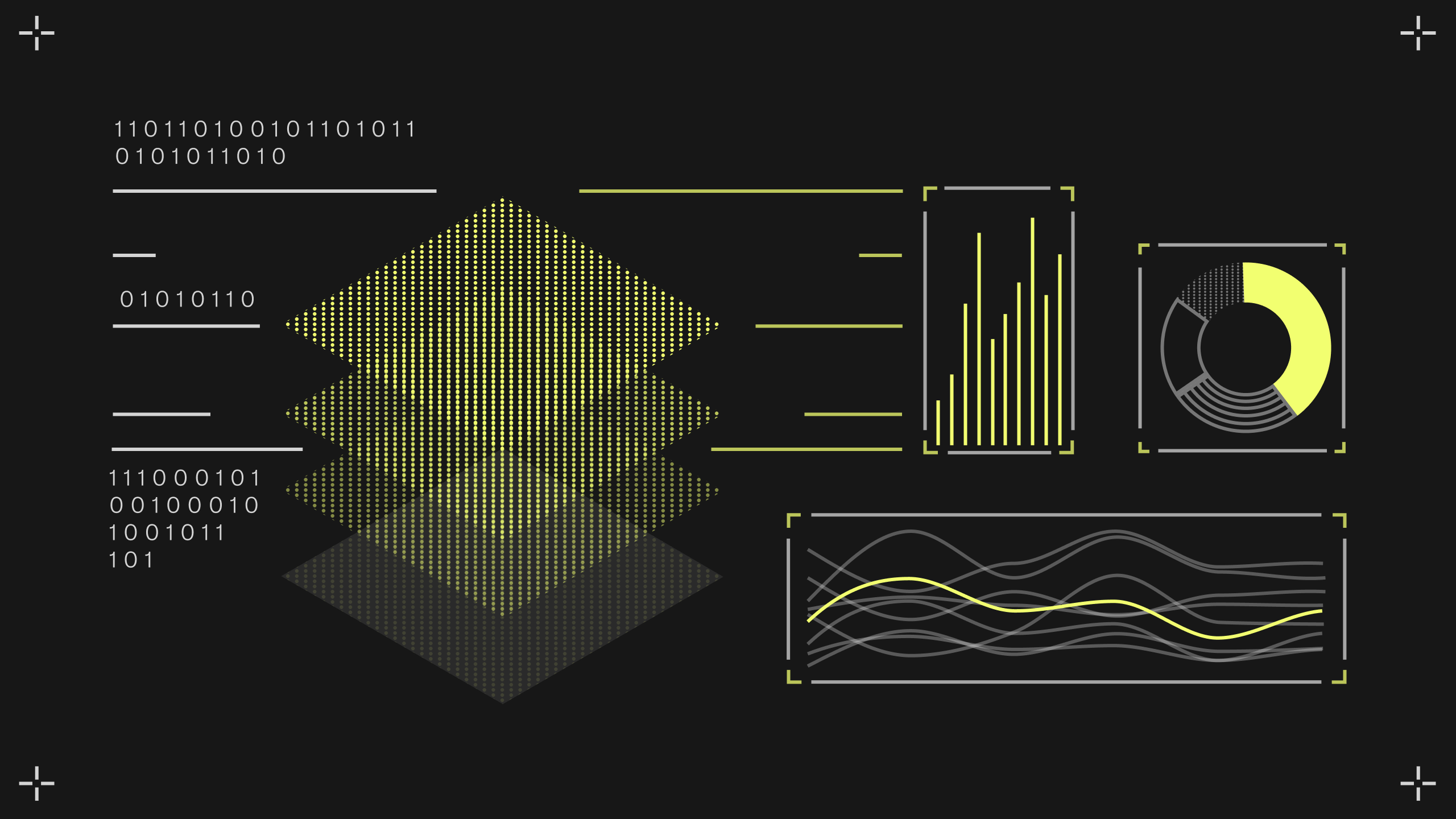
Key Takeaways
The traditional record-to-report (R2R) process is a slow, high-risk “black box” of manual spreadsheets and opaque approvals. Most automation tools fail because they only handle simple tasks, leaving complex reconciliations and exceptions to human teams. This partial automation creates compliance risks and prevents true audit readiness.
To solve this, finance leaders need an end-to-end R2R automation system that is both resilient and transparent.
- Orchestrated Workflows: Instead of fragmented tasks, modern systems like Kognitos orchestrate the entire close, connecting ERPs, sub-ledgers, and bank portals to automate data gathering, reconciliation, and consolidation.
- Resilience via Collaboration: Unlike brittle bots that crash on errors, Kognitos handles inevitable month-end exceptions by pausing and asking human experts for guidance in plain English.
- Total Auditability: The system creates a clear, human-readable audit trail for every calculation and entry, making audit readiness the default state.
This approach transforms R2R from a chaotic cost center into a strategic, auditable function.
For most finance leaders, the record-to-report process is a necessary evil. It’s a high-stakes, high-stress cycle of manual data wrangling, spreadsheet gymnastics, and last-minute journal entries, all driven by brutal deadlines. We know this record-to-report cycle is slow, expensive, and risky.
The problem is that most record-to-report automation solutions don’t solve the real problem. They just nibble at the edges.
You might have a tool that automates one data entry task or a simple workflow that emails a file for approval. But this leaves your skilled team to manage the entire, complex, and high-risk reconciliation and consolidation process by hand, still buried in a web of disconnected spreadsheets.
It’s not just about making the close faster; it’s about making it transparent and reliable. We’ll explore how modern systems can finally orchestrate the full R2R journey, from data gathering to final reporting. This journey is the future of record-to-report process transformation.
We will focus on building a system that delivers on two core promises. First, it is resilient: it can handle the inevitable month-end surprises without crashing. Second, it is completely transparent: you can prove to an auditor exactly how your financials were prepared. This is the new standard for record-to-report automation. The goal is to give finance leaders a practical way to build a faster, more accurate, and truly reliable approach, moving R2R finance from a high-risk cost center to a strategic, auditable function.
Why Partial Automation Is a High-Risk Gamble
Record-to-report in accounting is the system of record. Its integrity is non-negotiable. The biggest danger in a manual or partially-automated close isn’t just that it’s slow; it’s that it’s a black box.
Think about your current R2R process flow. When an auditor asks, “How was this intercompany elimination calculated and posted?” What’s the answer?
All too often, it involves digging up a master spreadsheet, finding the right tab, trying to decipher a complex formula, and tracing the number back to an email approval. This is not a process; it’s a liability. This lack of transparency is a failure of most record-to-report solutions.
The Failure of Task Automation
First-generation record-to-report automation tools were focused on simple tasks. They could download a bank statement or copy data from one cell to another. But they couldn’t understand the data. They couldn’t perform a reconciliation, identify an anomaly, or handle an exception.
This leaves your expert accountants to do all the high-stakes, high-judgment work. The automation doesn’t actually reduce risk or complexity; it just shaves a few minutes off the easiest part of the job. This is not a true record-to-report solution.
The R2R in Audit Readiness Problem
This black box approach makes genuine R2R in audit readiness impossible. You can’t be ready for an audit when your entire process relies on a collection of manual, disconnected files and opaque tools. You are in a constant state of reacting to audit requests, not proving your controls.
A modern record-to-report automation strategy must be built on a foundation of transparency. The goal of R2R finance is to produce numbers that are not just correct but provably correct.
The Path to a Transparent, End-to-End R2R Process
A true record-to-report process transformation moves from this chaotic, high-risk “black box” to a unified, transparent, and resilient system. This system must be able to orchestrate the entire record-to-report process, not just one small piece of it.
This end-to-end approach to record-to-report automation involves two key shifts.
1. From Fragmented Tasks to Orchestrated Workflows
The record-to-report cycle is not one task. It’s a complex R2R process flow that involves dozens of systems, departments, and dependencies. Your automation must be able to manage this entire journey.
A modern record-to-report solution acts as the central conductor for your close, capable of:
- Connecting to All Systems: Autonomously pulling data from your ERP, all sub-ledgers, bank portals, and even departmental spreadsheets.
- Executing the Work: Intelligently performing complex reconciliations, validating account balances, calculating and posting accruals, and running intercompany eliminations.
- Managing the Full Cycle: Automatically consolidating entities and preparing draft financial statements for review.
This is the only way to achieve a meaningful record-to-report process transformation.
2. From Brittle to Resilient: Handling Month-End Exceptions
The month-end close is defined by exceptions. A late file from operations, a new GL account, a reconciliation that doesn’t tie out- these are not “if” events; they are “when” events.
Older record-to-report automation tools are brittle. When they hit an exception, they fail. The automation stops, an error log is created, and your team is left to manually fix the problem, often under intense pressure.
A resilient system, by contrast, is built to collaborate. When it finds a problem, it doesn’t just crash; it asks for help. This is the core of modern record-to-report services.
Imagine this scenario: The system is running a reconciliation and finds a $40,000 mismatch.
- The Old Way: The automation fails. Your team gets an error alert and has to manually investigate the cause.
- The New Way: The system pauses that one step and asks your Senior Accountant: “The ‘US-to-UK’ intercompany balance is off by $40,000, which is above the $5,000 threshold. Should I (A) Post a plug entry to suspense, or (B) Route to the Corporate Controller for review?”
This partnership between automation and human judgment is what makes a close reliable. It’s a system designed for the real world, not a perfect happy path.
An Auditable System for R2R Finance
This is precisely the challenge Kognitos was built to solve. It provides one of the only record-to-report solutions designed from the ground up to be both resilient and 100% transparent, finally delivering on the promise of record-to-report automation.
Kognitos orchestrates your entire record-to-report process by connecting to your existing systems. But its true power for R2R finance comes from how it solves the two biggest problems in the close.
1. Solving for Transparency and R2R in Audit Readiness
Kognitos is built for finance leaders who must answer to auditors. The automation logic itself is clear, structured, and human-readable.
This means when an auditor asks, “How was this consolidation entry calculated?” your team can show them a definitive, understandable record:
- Data was pulled from the ‘US,’ ‘UK,’ and ‘DE’ entities.
- The ‘UK-to-US’ intercompany transaction of $1.5M was identified.
- The ‘US-to-UK’ receivable of $1.5M was identified.
- The transactions were eliminated and the entry was posted.
This is not a black box. It is a provably compliant system, making R2R in audit readiness your default state, not a quarterly fire drill. This is what world-class record-to-report services should enable.
2. Solving for Resilience and Real-World Exceptions
The Kognitos platform is designed to manage exceptions, not fail from them. When it encounters that inevitable month-end surprise, it uses its Guidance Center to collaborate with your team in plain English. This human-in-the-loop design ensures that your experts are applying their judgment where it matters most, while the automation handles the 99% of work that is standard. This approach makes your record-to-report automation robust and reliable.
This combination of orchestration, resilience, and transparency is the only way to achieve a true record-to-report process transformation.
Build a Close You Can Trust
Finance leaders, thus far, have been forced to choose between a slow, manual record-to-report process or a fast, high-risk black box automation. This is a false choice.
The real goal of record-to-report automation is not just speed; it’s control. It’s the confidence that comes from knowing your numbers are accurate, your process is reliable, and your entire close is 100% auditable.
Stop nibbling at the edges with simple task automation. It’s time to build a faster, more accurate, and truly reliable close- one you can actually trust. This is the future of R2R accounting.
Discover the Power of Kognitos
Our clients achieved:
- 97%reduction in manual labor cost
- 10xfaster speed to value
- 99%reduction in human error
The record-to-report process (or R2R) is the end-to-end finance and accounting function that involves collecting, processing, and presenting financial data. It covers all the record-to-report process steps: from recording individual transactions in a sub-ledger to creating the final financial statements and management reports.
R2R in finance (or R2R finance) refers to this entire “close-to-disclose” cycle as a central function of the finance department. It includes general ledger accounting, fixed assets, intercompany accounting, reconciliations, financial consolidation, and regulatory reporting.
Record-to-report automation is the use of advanced technology to execute the R2R workflow. This has evolved from simple task automation (like data entry) to intelligent record-to-report solutions (like Kognitos) that can orchestrate the entire process, including performing reconciliations, posting journal entries, handling exceptions, and preparing reports, all while remaining fully auditable.
The primary record-to-report process steps include:
- Data Capture: Recording all transactions (journal entries, sub-ledger postings).
- Reconciliation: Performing balance sheet and bank reconciliations to ensure data integrity.
- Consolidation: Consolidating financial data from multiple entities and eliminating intercompany transactions.
- Reporting: Generating the final financial statements (P&L, Balance Sheet, Cash Flow) for internal and external use.
Analysis: Analyzing financial performance and providing insights to the business.
The benefits of a comprehensive record-to-report automation strategy are transformative:
- Faster Close: Drastically shortens the record-to-report cycle from weeks to days.
- Improved Accuracy: Eliminates manual errors in calculations, reconciliations, and data entry.
- Enhanced Auditability: Creates a fully transparent, auditable trail for every number, ensuring R2R in audit readiness.
- Lower Costs: Reduces the immense manual effort, overtime, and write-offs associated with a manual close.
Empowered Team: Frees your skilled accountants from tedious, repetitive tasks so they can focus on high-value analysis and strategic R2R finance initiatives.
Modern record-to-report automation platforms can manage a wide range of processes. This includes, but is not limited to, record-to-report in accounting tasks like:
- Automated bank reconciliations.
- Balance sheet account reconciliations and substantiation.
- Journal entry creation, validation, and posting.
- Intercompany eliminations and financial consolidation.
- Generation of draft financial statements and reporting packages.
- Data extraction and aggregation from various sub-ledgers. This holistic approach is the core of any successful record-to-report process transformation.








